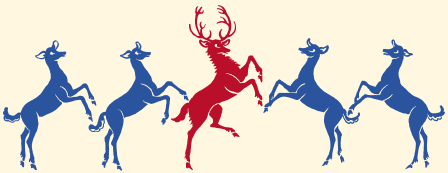The first Assembly was held in 1924 at the Colony Club. In the early days, the Assemblies were often reported in the New York Times Society pages. One such article entitled The Men's Turn from the December 20, 1931 Times stated:
"Plans are already underway for a Leap Year Assembly to be held in the main ball-room of the Ritz-Carlton. It will be the third in a series of such dances that were originated in 1924 and have proved popular with debutantes of the current and previous seasons, as well as with the young married set."
Debutante balls were more common in those days and the debutantes typically had two gentleman escorts. The same article goes on to explain the gentlemen subscribers of the Assembly having multiple escorts:
"Following the custom of leap year, when the usual order of entertaining is reversed, the dance is given under the auspices of a number of young men...Men are invited to subscribe and each is entitled to three guest cards for ladies."
Another article from the Times published on February 29, 1948 explains the 1944 lapse and more about the customs of the party:
"The Leap Year Assembly, an institution among subscription dances since its inception in 1924, was resumed last night with a gala dance in the main ballroom of the Ritz-Carlton. The party was canceled because of the war in 1944...These dances are patterned on the Junior Assemblies and Knickerbocker Assemblies with the formalities in reverse. Only men are invited to subscribe, each being allowed to invite three young women as guests. The "stag-line" is comprised of girls, who take the men to dinner, supply them with floral or vegetable boutonnieres and corsages, and "cut-in" during the general dancing."
The founders of the dance included Edward Everett Watts, Jr., Gilbert Colgate, John Minturn LeRoy, James Russell Lowell, and Abbot Low Moffat. Other early committee members included Cornelius Rea Agnew, Jr., Edward C. Delafield, Livingston Longfellow, Wm. B. Nichols, Paul G. Pennoyer, and John Rutherford.
The tradition of the comical and wildly excessive adornments arose in the early days. The committee members and subscribers, all of whom were highly eligible bachelors from New York society, would be adorned so they could more easily be identified on the dance floor helping their lady guests to find them and cut in, also to make them appear ridiculous enough that other ladies might overlook them. Therefore, to the astute observer, the more lavish the adornments, the more desirable the escort.
Lavish dinner parties were traditionally hosted by committee members at their homes prior to the dance. Later in the evening guests were treated to a light supper of scrambled eggs, ice cream, and coffee which sustained them into the wee hours of the morning.
Since the founding of the dance, subscribers attend only at the invitation of a committee member.
The early Assemblies were held at the Colony Club, the Ritz-Carlton, the Plaza Hotel, and later the St. Regis where guests dined in rooms on the first floor and then repaired to the roof-top ballroom and terrace. In the 1980s it was moved to the Union Club where it is still held today.
William J. Schieffelin, Jr., in his memoir, relates "...ladies gave their beaux fancy decorations. Mary Alice gave me a wire top hat festooned with carnations and other flowers which I wore proudly with leis and other bouquets from other ladies. Ed Watts was likewise florally decorated, of course all of us in our white tie dress suits and white kid gloves. The ladies too looked wonderful in their best bib and tucker on the floor of the Plaza's grand ballroom, where all the recent Assemblies have taken place." ~
